Teacher solidarity: a UK-Rwandan physics project Inspire article
Thanks to the determination of UK physics teacher David Richardson, increasing numbers of students in Rwandan schools are experiencing the delight of practical work. Vienna Leigh reports.
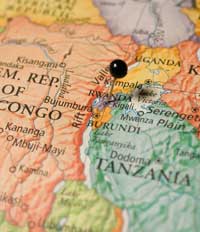
central Africa
Image courtesy of JonGorr /
iStockphoto
Mention Rwanda and, even now, people are most likely to think of its troubles; the Rwandan genocide, 1994’s mass killing of 800 000 people, is not something that can – or should – be easily forgotten. Today, though, this east-central African country is one of the continent’s success stories, with an efficient government, notable economic growth and even a flourishing tourism industry. But when, in 2004, physics teacher David Richardson visited a colleague who was doing voluntary work at a secondary boarding school, Apred Ndera, about 5 miles from the capital Kigali, it was the education system that caught his attention.
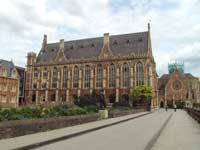
image source: Wikimedia
Commons
“Students there are usually well-motivated and have a strong desire to do well, knowing that the way to move on is to get a good education,” says David, who works at Clifton Collegew1, a boarding school in Bristol, UK. “Unfortunately, though, discussion forms no part of the way they are taught. Often they just copy the work from the board and try to understand it later. Teachers aren’t valued in society and aren’t well paid, with many having more than one job to make ends meet. They can also simply decide to leave one school to go and work elsewhere with no warning, meaning students are suddenly left with no teacher.”
During his visit, David taught the senior 5 maths and physics class – 17-year olds – in their free periods. “Practical work isn’t common in Rwandan schools, particularly in physics, mostly due to a lack of apparatus,” he says. “Any equipment they have is often incomplete or broken, or they simply don’t know how to use it. They hadn’t even seen simple electric circuits, and none could connect up a battery pack to bulbs when I brought these into the lesson.”
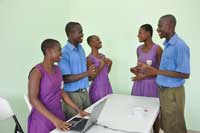
School and Asi Daahey
International Junior High
School in Ada, Ghana
Image courtesy of Ernest Nanor
David was inspired to put together a one-hour show covering the school’s physics syllabus. “I spent two weeks collecting together apparatus to demonstrate standing waves, oscillations in a pipe, Doppler and other wave effects,” he explains. The results were more than he could have hoped for. “Thanks only to word-of-mouth publicity around the school, the hall was packed with 300 students! It was great fun. When I have been back to visit, students tell me that they still remember the physics they witnessed that day.”
This persuaded David to try to do something to improve the practical work in Rwandan secondary schools. He looked at how practical work could be fitted into the school syllabus. “I made a list and returned home with a mission to find a way to get the necessary equipment to students in Rwanda,” he explains.
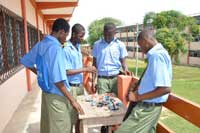
School and Asi Daahey
International Junior High
School in Ada, Ghana
Image courtesy of Ernest Nanor
During the following year, he approached the international department of the UK-based Institute of Physicsw2 (IOP) to see if they would fund his idea. “My aim was to take enough apparatus to allow five schools to carry out demonstrations in waves, dynamics, optics, electronics and modern physics,” he says. “I planned to take four colleagues with me in the summer holidays, to work with ten local teachers, training them to use the apparatus and giving them the confidence to use it with their own classes.”
The IOP agreed to the funding, and in August 2005, David, accompanied by IOP network coordinator David Grace, and a team from Gordano School, Portishead – head of physics Paul Crossthwaite, teacher Paul Welch and 18-year-old Adam Aziz, selected from among many student applicants – travelled back to Kigali. “Training the teachers was an amazing experience,” says David. “I was impressed with the hard work that they put in. There was no shyness; everyone wanted to learn, and they were all friendly and pleased to be there. They were very excited to know what was in the first box!”
Even at mealtimes, the conversation often turned to physics. “It was interesting to hear about the politics of the education system, and how teachers worked within this at their schools,” says David.
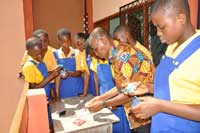
School and Asi Daahey
International Junior High
School in Ada, Ghana
Image courtesy of Ernest Nanor
David began by showing them circuit apparatus. “They performed the experiments with care and precision, making careful notes, and were delighted that they would be able to take the apparatus away with them,” he recalls.
The teachers repeatedly came up with further ideas about equipment that they would like to be able to show their students. “You really appreciate how privileged we are in the UK when you see a teacher looking forward to the chance to use bulbs, batteries and ammeters with their classes for the first time,” says David.
The project did not stop there. When David repeated the exercise in the summer of 2006, the IOP funding allowed the number of schools receiving the apparatus to be increased from five to ten. In addition, Rwandan teachers who had been trained in 2005 carried out the training instead of their British counterparts. “I felt that this was important, so that the Rwandan teachers felt they were sharing what they had learned with other colleagues from across the country,” he says. “It was encouraging to hear how they had been using the apparatus they had been given, and about the impact that this had had on their students.”
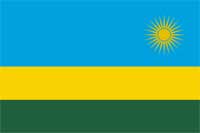
Image courtesy of Zach
Harden; image source:
Wikimedia Commons
In addition, the IOP had also agreed to fund a workshop in which the apparatus required could be assembled locally. Two technicians – former students at Apred Ndera – were trained to make the equipment. “Over 12 months, they produced 65 complete sets of apparatus ready to be distributed to schools in Rwanda,” says David. “They displayed what they produced at an education exhibition for Rwanda and Uganda, and many people commented on the quality, hardly believing that it was produced locally.” It was at this point that the science journal Naturew3 heard about the project. They are paying the salaries of the two technicians, initially for three years, and provide the money to buy enough components to build 100 sets of apparatus each year.
The final stage was to introduce a local project manager, so the project could be run from Rwanda. Since then, David has met with representatives from the Rwandan government to discuss the importance of practical demonstrations in secondary-school education. The IOP and Nature are working with the Kigali Institute of Educationw4 to ensure that the project is sustainable. A similar IOP project is being rolled out in Ethiopia, and there are plans to extend the initiative to other African countries including Ghana, Tanzania, Uganda and Malawiw5.
“I hope and believe that this project provides a good model of how to start to introduce practical work into secondary science education,” says David. “I’m looking forward to seeing how the government responds to this challenge and trust that, ultimately, it will be the students who see the benefit: improved physics teaching.”
Web References
- w1 – Find out more about Clifton College, Bristol, on their website: www.cliftoncollegeuk.com
- w2 – The UK-based Institute of Physics is a scientific charity devoted to increasing the practice, understanding and application of physics. See: www.iop.org
- w3 – To find out more about the science journal Nature and associated activities, see: www.nature.com
- w4 – Learn more about the Kigali Institue of Education, a young public institution of higher learning in Rwanda, here: www.kie.ac.rw
- w5 – To help support physics education in some of the poorest countries in the world, you can donate online to the IOP’s Physics for Development programme. See: www.iop.org/about/international/development/africa





